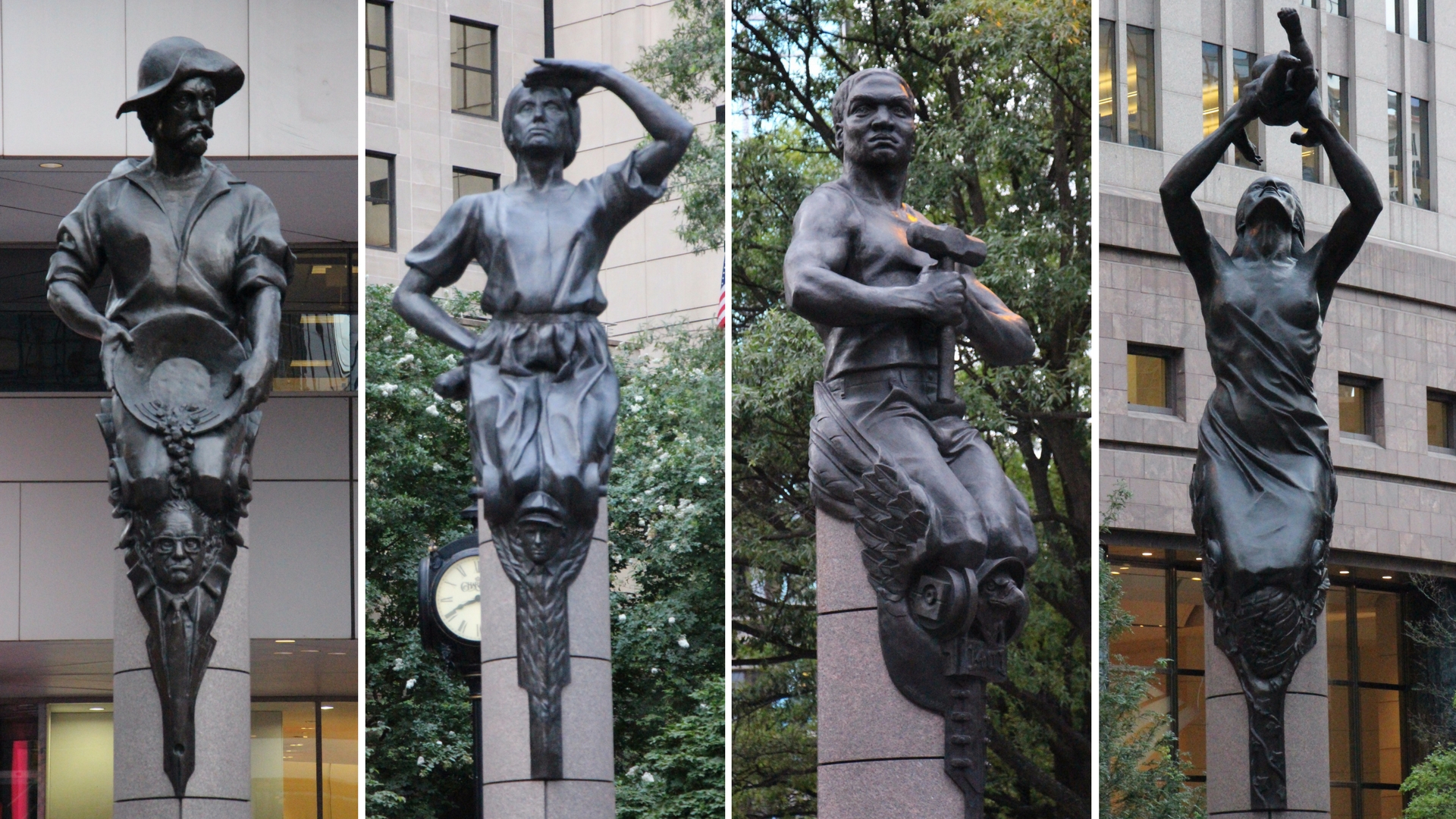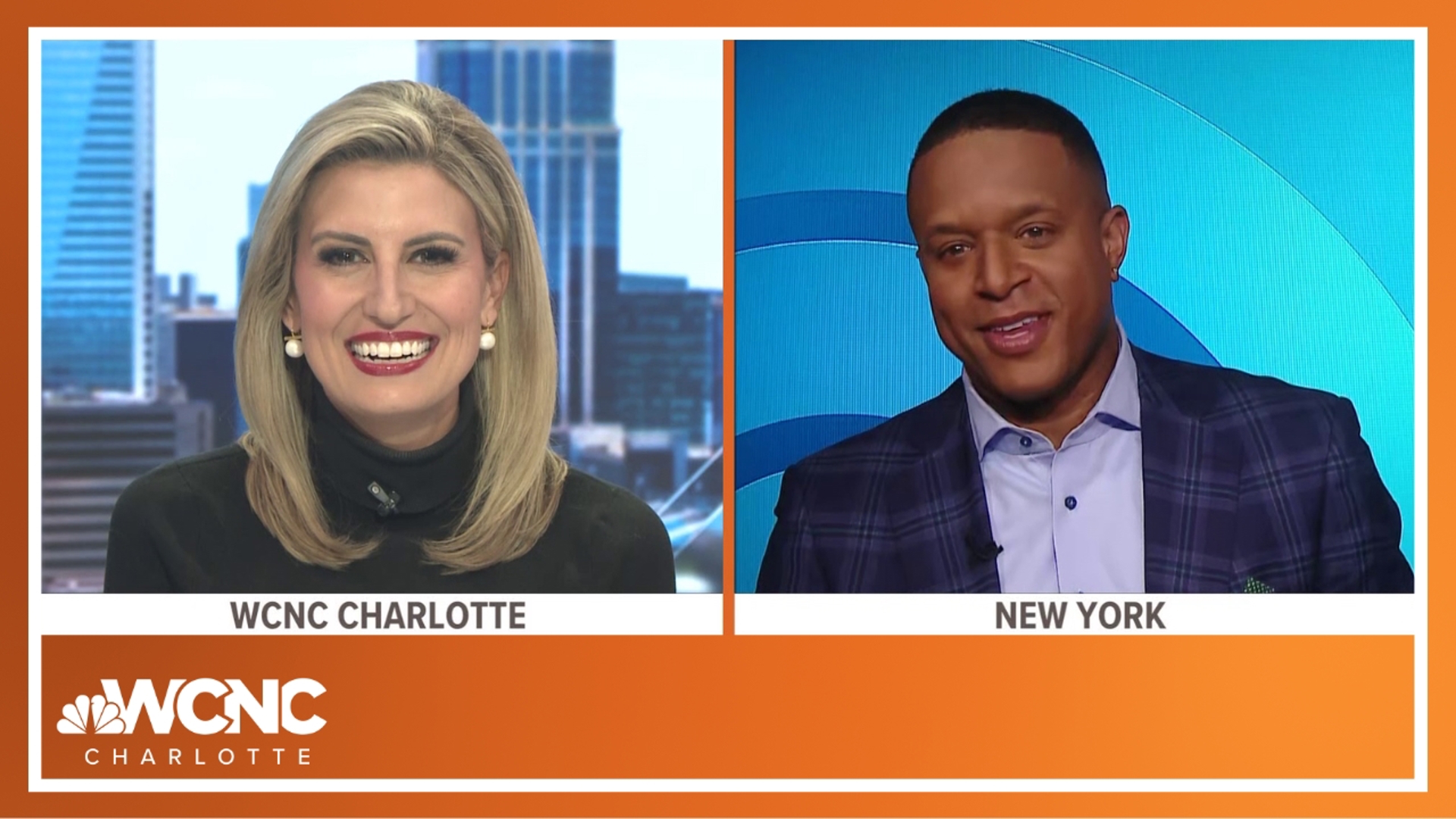CHARLOTTE, N.C. -- The center city of Charlotte, known as uptown, is separated into four different wards. And roughly, at the center of those wards is the cross streets of Trade and Tryon.
The cross streets are host to hundreds on a daily basis. With a steady stream of traffic from foot and car crossing the midpoint, it's a perfect representation of how Charlotte is North Carolina's largest city.
While Trade and Tryon is home to this steady blur of movement, there are four figures you will always find standing at the Queen City's center.
Have you noticed the massive statues guarding the city center's four corners? The statues are representatives of Commerce, Industry, Transportation, and The Future.

"The historic figures of commerce industry and transportation represent enterprises which have contributed to Charlotte's growth as a major commercial center. While honoring Charlotte's past, the three figures all look toward the fourth figure, the future," a bronzed description embedded in the sidewalk's brick says.
We caught up with Raymond Kaskey, the artist behind the statues, to learn a little more about their history.
Q: Where did the inspiration for these works of art originate from?
The Queen's Table was the client and it was the second project I've done with them. Back in 1989 I did the Queen Charlotte which was done at the airport, at any rate they were quite happy with it so they hired me to do their next project which was to do something in the square which represented the culture and history of Charlotte.
Q: Did you come up with the idea of the four representatives of commerce, industry, transportation and the future?
We (The Queen's Table) developed that idea together. Originally, it was supposed to reflect the history of Charlotte. But the future got in there because there wasn't an alternative.
For commerce, that was based on the fact that there was gold discovered in the 1830s and that's why the Mint was developed. For industry, the textile industry was big in North Carolina and Charlotte was a crossroads, Trade and Tryon is the center of the town... it was and is a crossroads as a transportation hub. So that's the genesis of the (transportation) figure, celebrating the workers who built the transportation network.
And then there wasn't really a clear cut fourth suggestion for the history, so the idea of the future was there but it was kind of an unknown, but we know that it involved babies and the next generation.
Q: What's up with the smaller heads underneath some of the statues?
In the gold mining figure and the little portrait head that showed up in the textile figure was my idea.
The one under the gold miner (commerce) was a portrait of Alan Greenspan, who was the head of the Federal Reserve Board. His portrait head was a humorist addition, a sort of representation of gold flowing into a piggy bank.
%
I put my own head under the textile figure (industry), or as much as I could get it to resemble me as a young kid. I read the book 'Like A Family' that detailed the use of child labor in the textile industry. It wasn't necessarily a negative exploitation because people working on farms came into where the textile mills were and they liked to hire the whole family. So... it wasn't necessarily exploiting cheap labor, although there may have been some of that too. That's why there was a kid in there, what kid better than me?
%
%
Q: Are there any other significant details you can tell us about?
On the future, there's a hornets nest that's an emblematic symbol that went back to the revolutionary war where the North Carolina soldiers were thought to be mad as hornets. And the baby in the future statue was one of the Queen's Tables members child who posed with the baby.
%
Q: How long did it take you to complete the project?
It was completed in 1995. It was probably around two years, from '93 to '95.
We started out with six or eight inch models and then quarter size models to work out the details. I've donated all of that to the National Building Museum in D.C.


